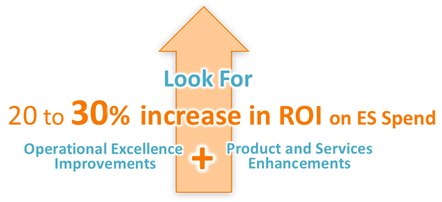Every year in every industry, advances in technology are reaching farther and penetrating more deeply into all aspects of business and life. The proliferation of sensors and actuators is reinventing how work is done in the oilfield, on the assembly line, in the airport hangar and in the home kitchen. As equipment, devices and consumer goods become more interconnected, nearly everything will become a node on a network, and continuous and real-time information will take more and more of the guesswork out of capacity planning and decision-making.
 Today, just about any physical object can be made a smart device: a car, an airplane, an oil rig. And just about any service—in the back and in the front office—can be made more intuitive and automatic. Success for enterprises in many industries comes down to this: how do we define the role and refine the application of technology in our products and services? And how do we do it faster and better than our competitors?
Today, just about any physical object can be made a smart device: a car, an airplane, an oil rig. And just about any service—in the back and in the front office—can be made more intuitive and automatic. Success for enterprises in many industries comes down to this: how do we define the role and refine the application of technology in our products and services? And how do we do it faster and better than our competitors?
There is one solution with two parts:
- Enterprises must be creative and agile in leveraging technology to continuously enhance value in their products and services.
- Engineering services providers must excel at embedding technology into products and services and be willing to share risk and reward so they can generate greater value on a continuous basis.
Many enterprises have long relied on engineering services providers on a project-by-project basis to develop, test and deploy technologies that enhance their products. But the Digital Economy is upping the pressure for enterprises to continuously improve the value of their products and relentlessly increase speed to market. To keep pace, many enterprises will have to take a hard look at their current service delivery models and consider an important shift toward more strategic sourcing options. What have largely been tactical and short-term relationships between the enterprise buy-side client and the engineering service provider will need to evolve into managed services relationships or working partnerships that share investment, risk and reward.
Advanced strategic sourcing partnerships with engineering service providers will help enterprises enhance product value for their customer base and improve operations by reducing waste in physical flows and logistics, shortening downtime of expensive equipment, increasing accuracy in inventory and resourcing, and improving decision-making. Enterprises that make this shift will see as much as a 20 to 30 percent gain in their return on investment in engineering services.
Read my recent white paper, Driving Greater Return on Engineering Services Investment, and contact me to discuss how shifting to a strategic sourcing model for engineering services can pay big dividends – for you and your customers.
About the author
Dave develops and delivers all aspects of the services ISG provides to some of the largest consumer products companies in the world, including Kraft, Procter & Gamble, Walgreens and PepsiCo. Dave and his team of consultants create strategies and service delivery plans and provide transition and transformation services and ongoing organizational and operational support. During his tenure at ISG, Dave has been involved in several large information technology assessments and sourcing transactions that have resulted in efficient restructurings, lower IT costs and improved service quality.
